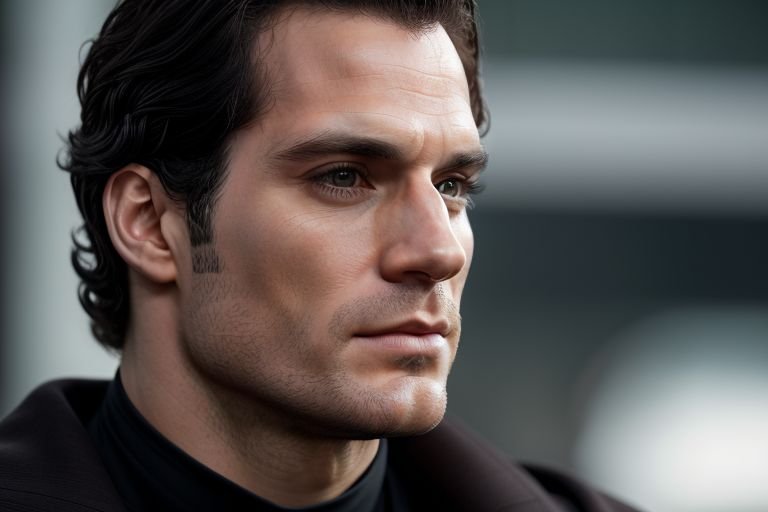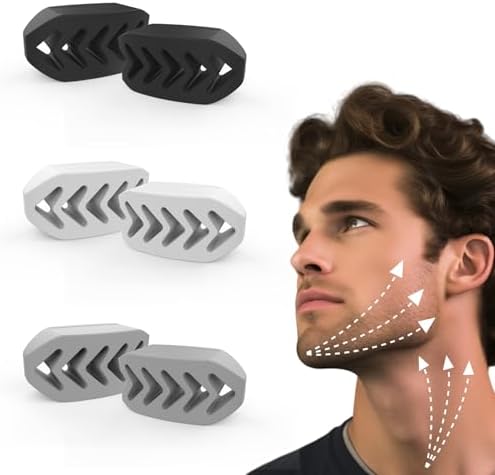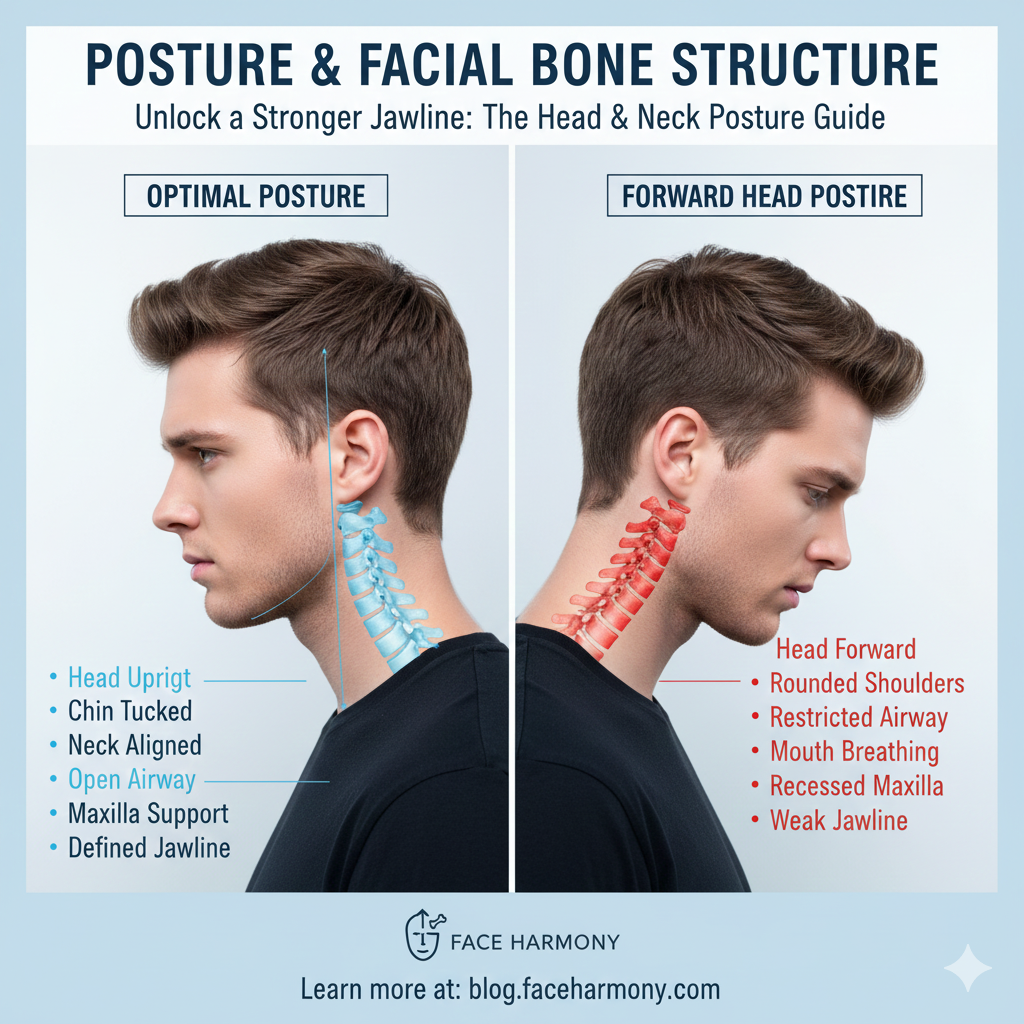Introduction to Facial Attraction
Facial attraction is a fundamental aspect of human relationships, influencing initial impressions and mate selection. The face is often the first feature noticed in social interactions, and specific facial traits can significantly impact perceptions of attractiveness and suitability as a partner. These impressions are not merely superficial; they are rooted in evolutionary psychology, which suggests that certain facial characteristics have been historically associated with health, genetic fitness, and reproductive success.
Among the facial features commonly perceived as attractive, those associated with masculinity stand out. Masculine faces typically exhibit a strong jawline, a pronounced brow ridge, and chiseled features. These traits are often seen as indicators of physical strength, high testosterone levels, and overall genetic quality. A strong jawline, for instance, is frequently linked with assertiveness and dominance, attributes that have been valued in human societies across cultures and eras.
Research also indicates that these masculine features play a role in signaling good health and vitality. For example, a pronounced brow ridge and chiseled features can be seen as signs of robust bone structure and lower susceptibility to illness. This evolutionary perspective suggests that women may subconsciously prefer men with these traits because they signal a higher likelihood of producing healthy offspring and providing protection and resources.
While cultural and individual preferences can vary, the underlying biological and psychological factors influencing facial attraction remain consistent. Understanding the science behind these preferences offers valuable insights into human behavior and relationships. As we delve deeper into the subsequent sections, we will explore the specific mechanisms and research findings that shed light on why women are particularly drawn to stronger jaws and masculine faces.
The Evolutionary Perspective
From an evolutionary standpoint, the preference for stronger jaws and masculine faces among women can be traced back to the fundamental principles of natural selection and survival. Evolutionary theories posit that certain physical traits, such as a pronounced jawline and robust facial features, are indicative of genetic fitness. These traits are often associated with higher levels of testosterone, which not only influence facial structure but are also linked to overall health and vitality. A man with a strong jawline and masculine face is thus perceived as someone who possesses superior genetic material, which can be passed on to offspring, enhancing their chances of survival and reproduction.
Anthropological evidence supports these theories, showing that across various cultures and historical periods, men with strong, masculine features have been consistently favored as ideal mates. This preference can be attributed to the fact that such traits signal an individual’s ability to protect and provide, both essential qualities for the well-being of offspring. For instance, in hunter-gatherer societies, men with pronounced masculine features were often those who excelled in hunting and defense, roles critical for the survival of the group. This historical context underscores the importance of these traits in ensuring a safe and resource-rich environment for raising children.
Moreover, the preference for stronger jaws and masculine faces is not merely a superficial attraction but a deeply ingrained biological instinct. Studies have shown that during ovulation, women are more likely to be attracted to men with these traits, suggesting a subconscious drive to select partners who exhibit signs of genetic superiority and physical health. This cyclical pattern of attraction highlights the role of evolutionary pressures in shaping human mating preferences, ensuring that the traits most beneficial for survival are perpetuated across generations.
In conclusion, the evolutionary perspective provides a robust framework for understanding why women might prefer masculine faces and stronger jaws. These traits act as markers of genetic fitness, health, and the ability to provide and protect, all of which are crucial for the success and longevity of offspring.
Psychological and Social Factors
The attraction to masculine faces, characterized by features such as stronger jaws and prominent cheekbones, is deeply rooted in both psychological and social factors. From an evolutionary perspective, these traits are often associated with health, strength, and genetic fitness, which may subconsciously influence preferences. However, beyond the biological underpinnings, societal standards and media representations play a substantial role in shaping perceptions of attractiveness.
Cultural norms and media portrayals significantly impact how masculine features are perceived. For instance, popular media frequently glorifies male celebrities with chiseled jawlines and rugged features, reinforcing the idea that these traits epitomize male attractiveness. This constant exposure can shape individual preferences, leading people to internalize these standards as benchmarks of desirability. Additionally, advertising campaigns and fashion industries often highlight models with pronounced masculine features, further embedding these characteristics within societal ideals.
Gender norms also contribute to the preference for masculine features. Traditional views on masculinity emphasize characteristics such as strength, dominance, and assertiveness, which are often visually represented by a stronger jawline and robust facial structure. These attributes are not only seen as markers of physical attractiveness but also as indicators of social and behavioral qualities that are deemed desirable. Consequently, societal expectations about gender roles can influence perceptions of attractiveness, making masculine faces more appealing to some individuals.
Moreover, psychological factors, such as self-esteem and individual experiences, play a role in shaping preferences. People with higher self-esteem may be more influenced by societal standards, while those with unique personal experiences might develop different criteria for attractiveness. The interplay between these psychological elements and societal influences creates a complex framework that determines individual preferences for masculine features.
In conclusion, the attraction to stronger jaws and masculine faces is not solely a matter of biological instinct but is also significantly influenced by psychological and social factors. Understanding these dynamics offers a more comprehensive view of how societal standards, media representations, and gender norms shape perceptions of attractiveness.
The Role of Hormones
Hormones play a significant role in shaping human attraction, particularly regarding facial features. Testosterone, a primary male hormone, is instrumental in developing masculine traits such as a stronger jawline, pronounced brow ridges, and facial hair. These features are often perceived as indicators of genetic fitness and overall health, potentially explaining why women may find them attractive.
Testosterone influences bone growth and density, leading to the development of a more angular and robust facial structure during puberty. This hormone-related facial shaping is a biological signal of maturity and reproductive capability, aligning with evolutionary theories that suggest women are subconsciously drawn to traits that signify good genes and the ability to provide and protect.
Interestingly, a woman’s preference for masculine faces is not static; it fluctuates according to her menstrual cycle. Research indicates that women are more likely to prefer men with stronger, more masculine features during the ovulatory phase of their cycle. This phase, when women are most fertile, is when they may be biologically driven to seek out partners with superior genetic qualities. For instance, a study published in the journal “Hormones and Behavior” found that women in the fertile window of their cycle showed a marked preference for masculinized male faces compared to other times.
Conversely, during non-fertile phases, women might favor men with softer, more feminine features, which are often associated with traits like kindness and reliability. This shift suggests a dual-mating strategy where women may seek genetically superior partners for offspring during ovulation but prefer partners who display nurturing qualities at other times for long-term relationships and parental investment.
These hormonal influences underscore the complex interplay between biology and attraction. They also highlight how deeply ingrained and evolutionarily driven the preferences for certain facial features can be, adapting to different reproductive and social needs throughout the menstrual cycle.
Statistical Data on Facial Attraction
Recent studies and surveys have provided compelling statistical data on women’s preferences for masculine features in men. A comprehensive study conducted by the University of New Mexico revealed that 62% of women rated stronger jaws and pronounced cheekbones as highly attractive features in men. This preference was consistent across various age groups, highlighting a universal appeal for masculine facial attributes.
In a survey by the Journal of Evolutionary Biology, which included over 2,500 women from diverse cultural backgrounds, 58% of participants expressed a preference for men with more traditionally masculine facial features. The study highlighted that women from Western cultures showed a slightly higher preference (65%) compared to women from Eastern cultures (52%). This difference suggests that cultural factors may influence the degree of preference for masculine features, but the overall trend remains significant across the globe.
Another noteworthy study by the University of Aberdeen involved a cross-cultural analysis of facial attractiveness. The findings indicated that women, particularly in their peak fertility years (ages 18-35), exhibited a stronger preference for men with robust jawlines and broader faces. This preference was statistically significant, with a reported 70% of women within this age group favoring these features.
Furthermore, a poll conducted by the American Psychological Association assessed the impact of media and societal standards on facial attraction. It found that 55% of women were influenced by media portrayals of masculinity, which often emphasize strong jawlines and defined facial structures. This poll underscores the role of societal and media influences in shaping perceptions of attractiveness.
These statistical findings collectively underscore a prevalent preference for masculine features among women, driven by a combination of biological, cultural, and societal factors. Such data provide a comprehensive understanding of the dynamics behind facial attraction and the enduring appeal of strong jaws and masculine faces.
Latest Research Findings
In recent years, significant strides have been made in understanding the science behind facial attraction, particularly regarding why women may prefer stronger jaws and masculine faces. A plethora of studies conducted over the past five years have delved into this phenomenon, uncovering a range of compelling insights.
A pivotal study published in the journal “Evolution and Human Behavior” in 2019 utilized a large, diverse sample to investigate female preferences for masculine facial features. The research employed a combination of facial morphing software and preference surveys, revealing that women generally showed a marked preference for faces with pronounced jawlines and strong bone structures. This preference was particularly pronounced during the ovulatory phase of their menstrual cycle, suggesting a potential evolutionary basis linked to reproductive fitness and genetic quality.
Another groundbreaking study in 2021, featured in “Psychological Science,” adopted a cross-cultural approach. The researchers examined preferences across different societies and found consistent trends, albeit with some cultural variations. The study employed both digital manipulation of facial features and real-world assessments to ensure robust, ecologically valid findings. The results underscored the universality of the attraction to masculine features, albeit moderated by cultural norms and individual differences.
Recent advancements have also been made in understanding the neurological underpinnings of these preferences. A 2020 study in the “Journal of Neuroscience” utilized functional MRI scans to observe brain activity in response to viewing masculine and feminine faces. The findings indicated that areas of the brain associated with reward and mate selection were more active when participants viewed masculine faces, providing a neurological basis for these preferences.
Overall, these studies collectively highlight a nuanced understanding of facial attraction. Methodologies have become increasingly sophisticated, ranging from advanced imaging techniques to cross-cultural analyses, providing a holistic view of why women may favor stronger jaws and masculine faces. These insights not only deepen our understanding of human attraction but also have broader implications for fields such as psychology, anthropology, and even artificial intelligence in creating more human-like avatars.
Cultural Variations in Preferences
Preferences for masculine features, such as strong jaws and chiseled faces, exhibit considerable variation across different cultures. In many Western societies, these traits are often highly valued and associated with attractiveness, virility, and strength. For instance, in countries like the United States and the United Kingdom, media and popular culture frequently idealize male figures with pronounced jawlines and well-defined facial structures. This preference is reflected in the casting of actors in Hollywood, who often embody these characteristics.
Conversely, other cultures may prioritize different standards of beauty. For example, in some East Asian countries, such as Japan and South Korea, a more delicate and softer facial appearance in men is often preferred. Here, the emphasis might be on youthful and less rugged features, which are seen as indicators of refinement and elegance. The popularity of K-pop idols, who typically have more androgynous and less aggressively masculine features, highlights this alternative standard of male beauty.
Moreover, within various African cultures, the ideal male appearance can differ significantly. In some communities, facial scarring or specific tribal markings, rather than the shape of the jawline, can be a significant factor in defining masculine attractiveness. These cultural markers are deeply rooted in tradition and carry meanings that go beyond mere physical appearance.
Globalization and cultural exchange are increasingly influencing these preferences. The widespread reach of Western media has introduced Western beauty standards to many parts of the world, sometimes altering local perceptions of attractiveness. However, this is not a one-way street; Western societies are also becoming more appreciative of diverse beauty standards through exposure to global media, travel, and multicultural interactions.
As a result, the definition of masculine attractiveness is becoming more inclusive and varied, blending traditional local standards with new global influences. This evolving landscape underscores the complex interplay between culture, media, and individual preferences in shaping our perceptions of beauty.
Conclusion: The Complexity of Attraction
The attraction to masculine faces and stronger jaws is a multifaceted phenomenon influenced by a constellation of evolutionary, psychological, and social factors. Evolutionary theories suggest that these traits are indicators of genetic fitness, signaling health, strength, and the ability to provide and protect, which are desirable qualities in a mate. Psychological research indicates that such facial features can evoke perceptions of dominance and assertiveness, characteristics often associated with leadership and success.
Social influences also play a critical role in shaping our perceptions of attractiveness. Cultural norms and media representations continuously reinforce certain beauty ideals, which can affect individual preferences. However, it is crucial to recognize that these influences are not monolithic; they vary across different cultures and can change over time. Additionally, personal experiences and individual differences contribute significantly to what one finds attractive. For some, a softer, more approachable face may be more appealing than traditionally masculine features.
It is essential to appreciate the complexity and diversity of human attraction. While it is interesting to explore why certain physical traits may be universally appealing, it is equally important to acknowledge that attraction is deeply personal and subjective. What one person finds irresistible, another may not find appealing at all. This diversity is what makes human relationships rich and varied.
Ultimately, the science of attraction is not about prescribing a one-size-fits-all formula but about understanding the myriad factors that contribute to our preferences. By appreciating the complexity behind why women may be drawn to stronger jaws and masculine faces, we can better understand the rich tapestry of human attraction and celebrate the unique qualities that each individual brings to the table.








